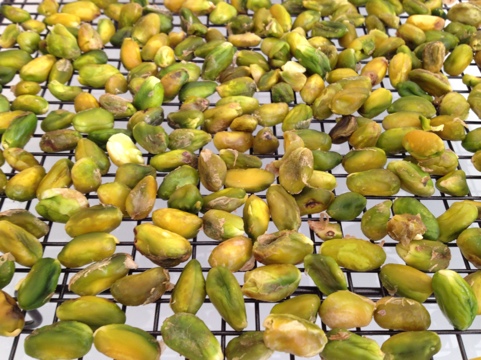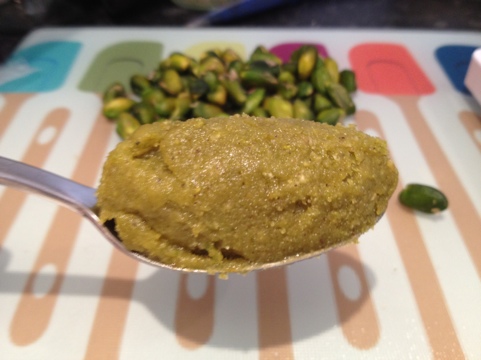Here’s a recipe for another staple in a bakers cupboard, pistachio paste!
Summer is finally here in London! Ah glorious sunshine and strawberries are in season. My father in law is coming to London and I thought I’d bake him a fresh strawberry tart with a twist, pistachio flavoured creme patissiere!
To flavour my creme patissiere, I need to make my pistachio paste and here is my recipe.
Ingredients
400g pistachios, blanched and peeled
100g ground almond
200g caster sugar
65ml water
Method:
1. Bring a saucepan of water to a boil, tip in approx 450g pistachios and allow to boil for exactly 2 minutes. Tip pan contents into a colander and drain water
2. Use a tea towel and rub the blanched pistachios to remove the skins.
3. Weigh 400g of the peeled pistachios and place peeled pistachios into a large bowl.
Note: The pistachios are dry to touch but I don’t roast these to fully dry the pistachios as the moisture will help make this form a paste later. Pistachios do not contain as much fat as almonds and hazelnuts and therefore remain sand like when ground and do not clump into a paste so the moisture here will help include just the right amount of moisture.
4. Bring sugar and water to boil in a saucepan over medium heat. Stir only until sugar dissolves and bring it to a hard ball stage (118-120 C). Wash down the sides of the pan occasionally with a pastry brush dipped in water to prevent sugar from recrystallising.
5. When sugar has reached hard ball stage, tip onto peeled pistachios.
6. Add ground almonds, mix to combine and place mixture into food processor and pulse until it forms a paste
Note: You can choose to add some green food colouring but I am happy with the colour. If I really need the colour to pop (e.g. macarons), I will add the necessary amount of colouring to that particular recipe instead of adding it to the pistachio paste.
Stay tuned for my strawberry tart with pistachio flavoured creme diplomat. I used the excess pate sucree (sweet shortcrust) and pistachio creme diplomat for mini tartlettes which are heading over to my hubby’s office.














